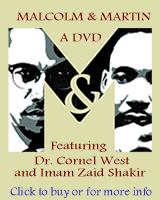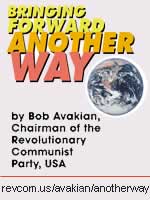
|
|||||||||||||||||||||
|
The current issue is always free to all readers If
you need the access available to a |
|

|
|
|
The issue of reparations for African people throughout the world has become a widely discussed topic that is manifesting itself into a variety of action plans and strategies. Some of these surfaced in the Reparations Corporate Lawsuit Federal Appeals hearing, recently held in Chicago. In my travels around the country, the issue of reparations appears to have penetrated the spirit and interest of African people in America in all walks of life. For those of us who have been organizing and advocating reparations, since the 1960s, for African people in America, specifically, and for African people throughout the world, the question becomes what does this current phase of the Reparations Movement mean for the just cause of the redemption and salvation of African people? When we talk about reparations, we are talking about the damages, compensation, and redress of those wrongs, so that the countries and people that suffered will enjoy full freedom to continue their own development on more equal terms. When we discuss reparations for African people in the United States we are talking about “slave labor, humanity, culture, legacies, names and language that were taken outside of the law and natural process by forceful demand of white captive slaveowners.” In this regard, the current phase of the Reparations Movement for African people in America is connected to the leadership of Sister Callie House, who founded “The National Ex–Slave Mutual Relief Bounty and Pension Association” in the 1890s. According to the research of Mary Berry, Sister House organized a Black mass movement, demanding reparations during the period of the 1890s to 1915. Berry reveals that, “working through meetings, literature, and traveling agents, the organization successfully developed membership across the South as well as…Oklahoma, Kansas, Indiana, Ohio, and New York.”
Further, Berry’s research reveals The Association’s 25 cents annual membership fee and the ten–cent monthly dues, along with $2.50 charged local affiliates for a Charter, augmented by an occasional extraordinary levy of five–cents to defray special expenses, provided the funds for this mass–based movement’s work. The objective was to organize a demand throughout the Black nation which would force the United States to provide the needed and well deserved pensions they sought for the aging persons formerly held in slavery, their surviving spouses, care–givers, and heirs.” In the recently published book, Eight Women Leaders
of the Reparations Movement U.S.A., by Linda Allen Eustace and
Dr. Imari Obadele, “The movement’s successful organizing,
coupled with the ubiquitous white supremacist values of whites,
generally and especially United States officials, which disposed
them in those days, as today, to attempt to defeat any significant
self help efforts among Black people, resulted in a ten year postal
investigation.” Although this phase of the Reparations Movement was not successful, the spirit and organizing work carried on through the Garvey Movement and again resurfaced through the leadership of the Honorable Elijah Muhammad and Malcolm X in the 1960s, making the reparations demand through Muhammad Speaks. The Nation of Islam, under the leadership of the Honorable Louis Farrakhan remains an advocate of the reparations demand. The Republic of New Africa made a reparations demand in 1968, demanding payment of $400 billion in slavery damages. In this context, James Forman, Director of International Affairs of the Student Non-Violent Coordinating Committee, interrupted a church service at New York’s Riverside Church to deliver his “Black Manifesto,” demanding $500 million in reparations from white synagogues and churches. The National Coalition of Blacks for Reparations in America (N`COBRA) was organized in 1987, following in the tradition of Sister Callie House. Since 1988, N`COBRA has developed a number of strategies designed to gain reparations for African people in America and also to help advance international efforts to win reparations.
Since 1989, Congressman John Conyers has introduced legislation calling for the U.S. government to hold a probing study of reparations. This legislation is currently receiving wide support, primarily due to the work of N`COBRA, other reparations organizations, and activists. Since the late 1980s, the December 12th Movement, the Uhuru Movement, The Lost and Found Nation of Islam, the Republic of New Africa, and the National Black United Front have been some examples of organizations that continue to organize around the demand for reparations. The Tulsa Race Riot Commission, under the leadership of Representative Donn Ross, added Attorney Deadria Farmer–Paellmann’s research on insurance companies that held slave policies in the 1850s, to the reparations discussion over the last several years. This research, exposing the involvement of these corporations in the slave trade and slavery, led to the filing of major reparations corporate lawsuits. The major lawsuit is now under appeal in the 7th Circuit Court. Finally, Alderman Dorothy Tillman’s Chicago City Council legislation initiative has had a great impact and has aided in the current interest African people in America now have on reparations. The following publications, Randall Robinson’s book, The Debt, Dr. Raymond Winbush’s Should America Pay?, and Dr. Mary Frances Berry’s book, My Face Is Black Is True, have all helped provide fuel to the reparations discussion. What this current mass phase of the Reparations Movement means is that African people have not lost our memory of the historical atrocities inflicted on us, and that we will never forget what has happened to us and continues today. The demand for reparations must be intensified through serious organization and activism, no matter how many white and Black people are opposed. Contrary to some, we must never forget what happened to us and how it continues to impact us today. REPARATIONS NOW! BC columnist Conrad W. Worrill, PhD, is the National Chairman of the National Black United Front (NBUF). Click here to contact Dr. Worrill. |
|
| Home | |
| April
26, 2007 Issue 227 |
||||||||||||||
|
||||||||||||||
| Printer Friendly Version in resizeable plain text format | ||||||||||||||
 |
||||||||||||||
|
||||||||||||||
 |
||||||||||||||
 |
||||||||||||||
 |
||||||||||||||
| |
||||||||||||||
| |
||||||||||||||































